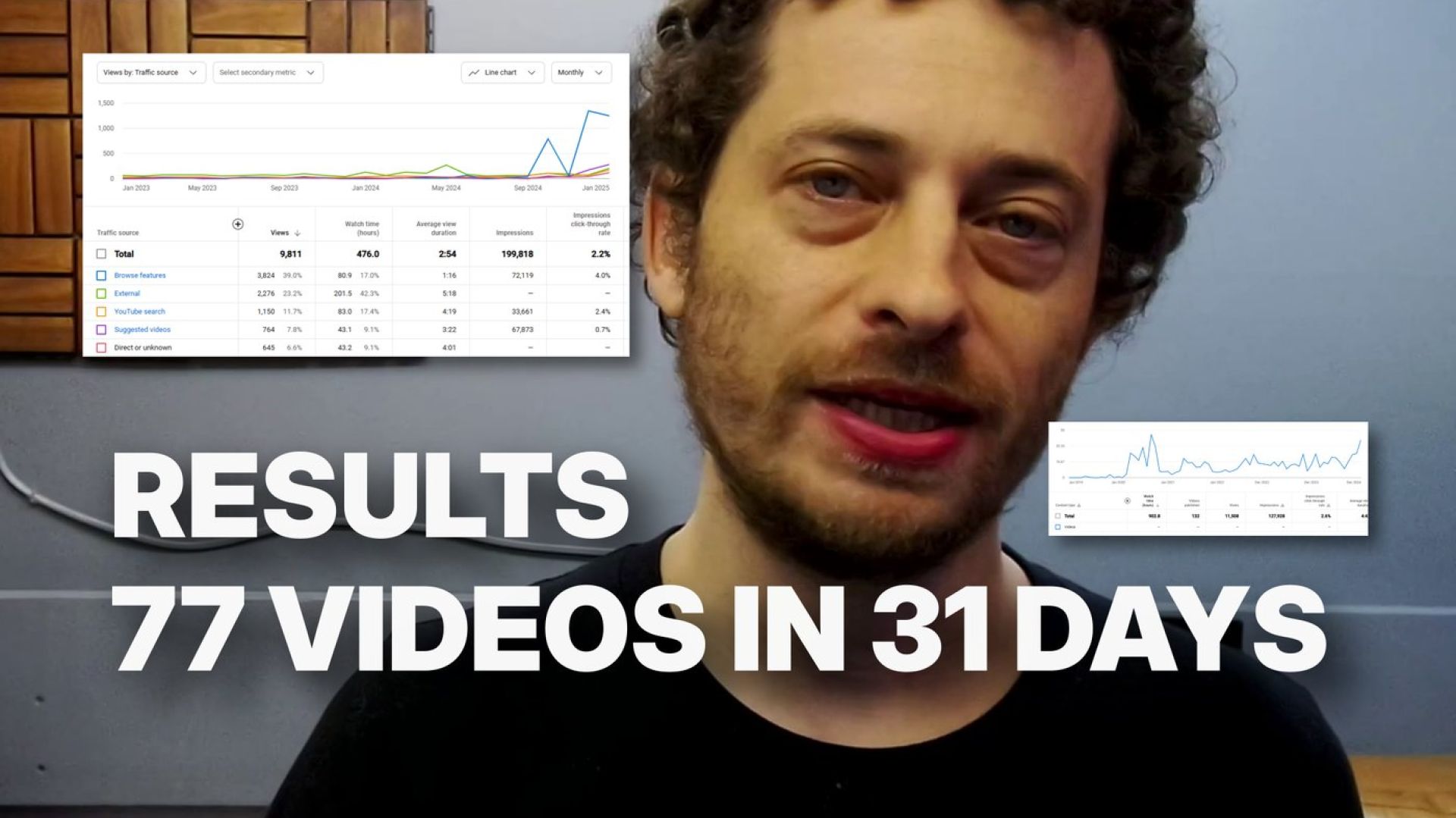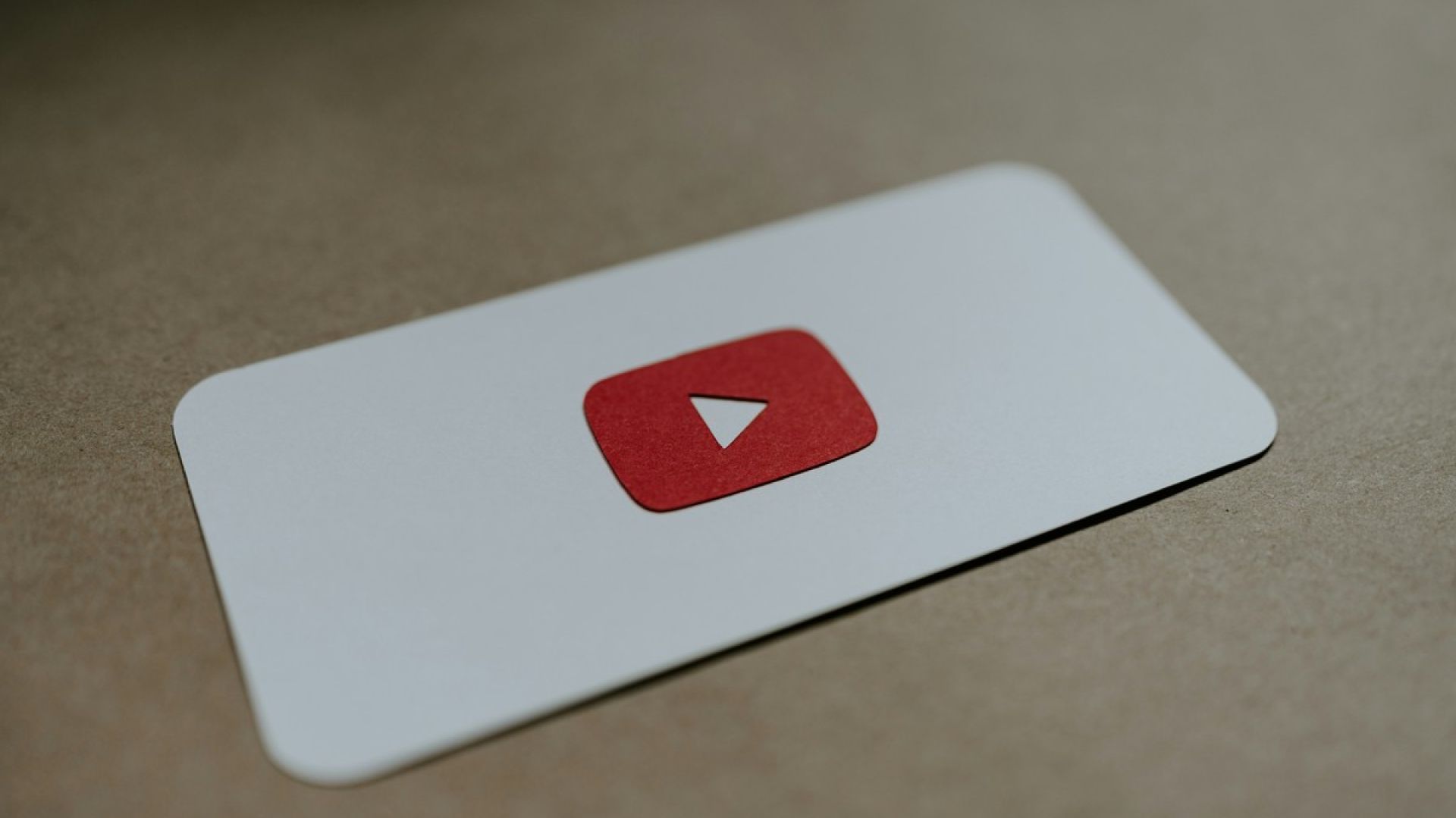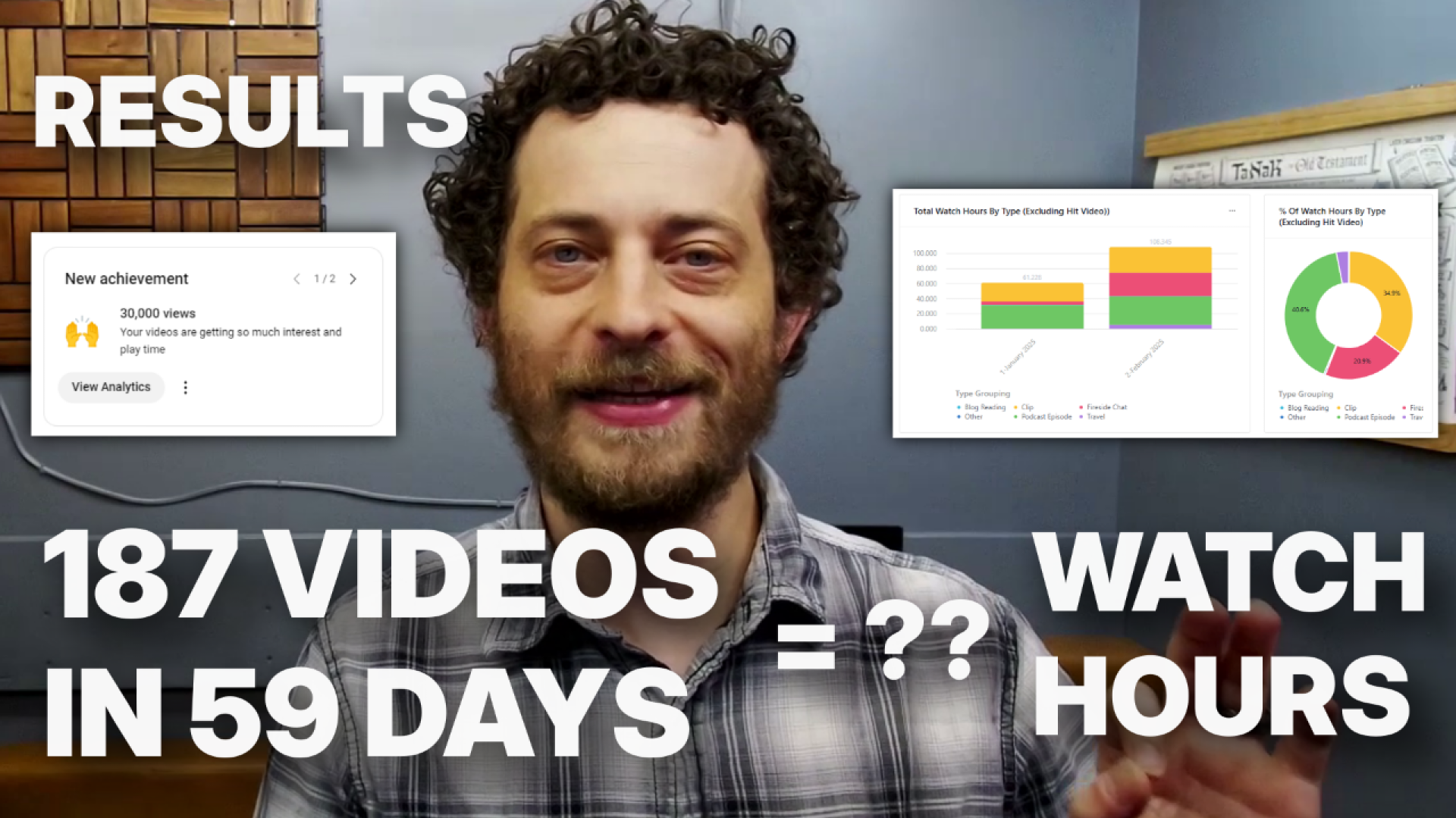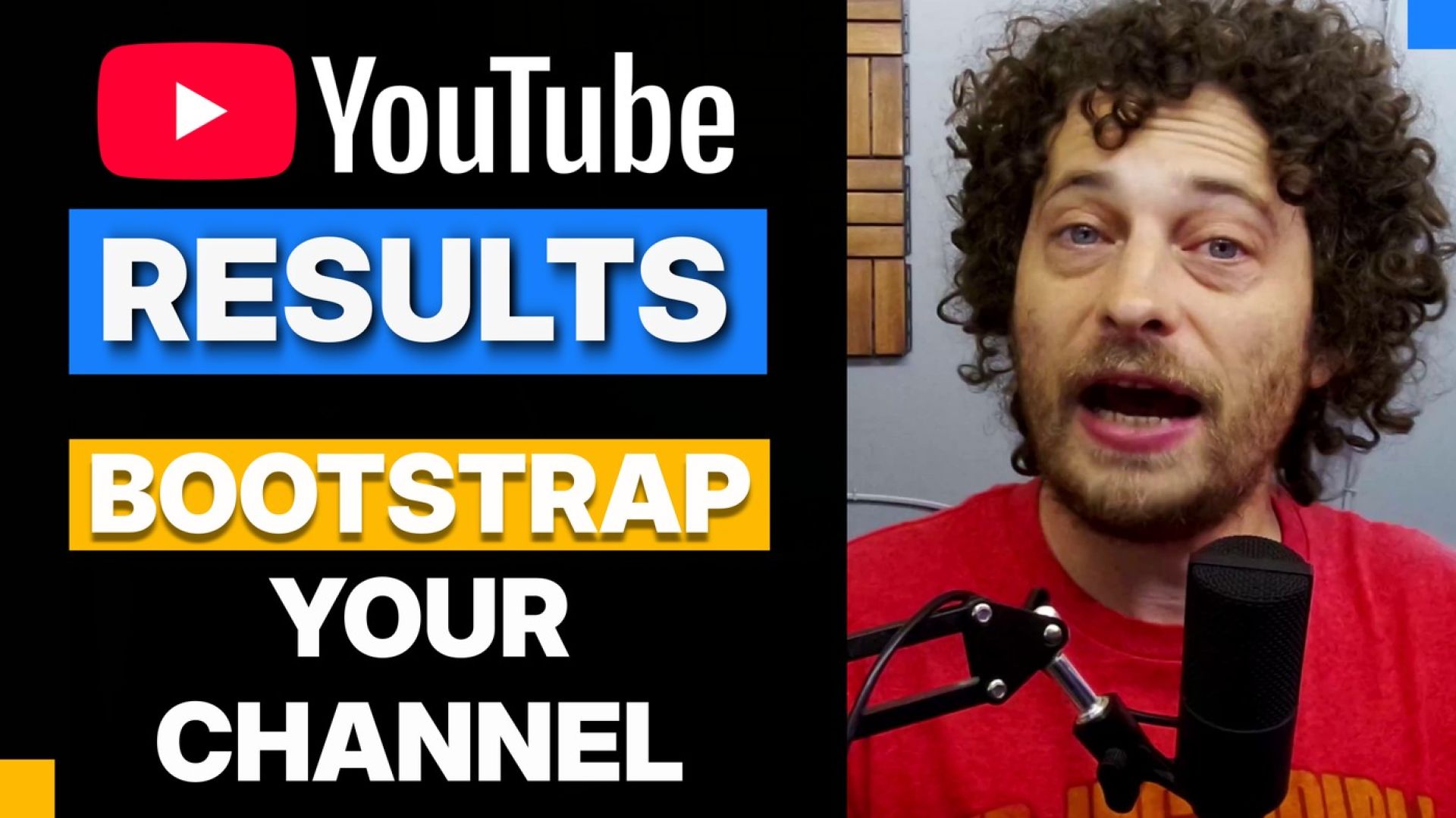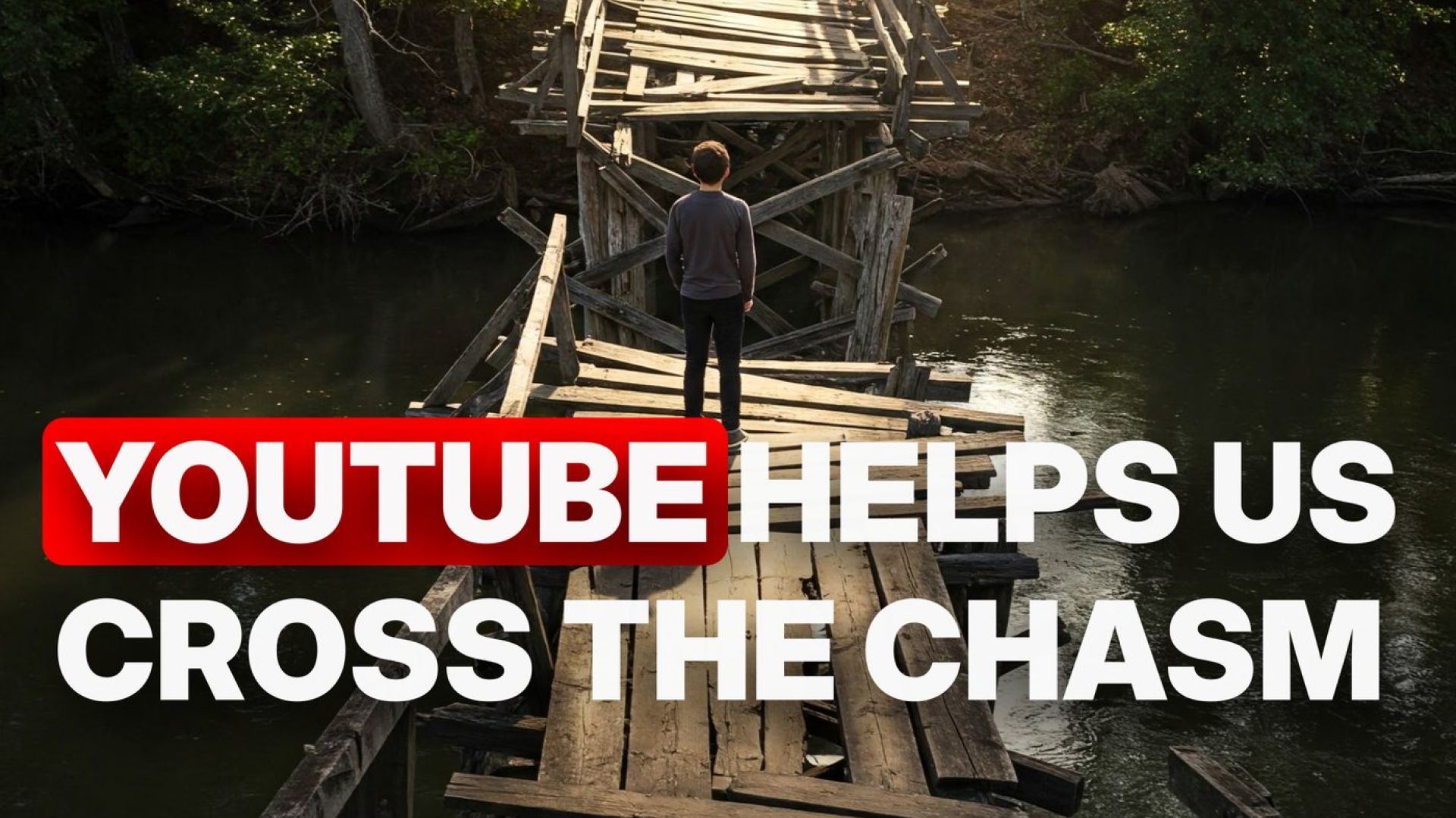
After Publishing 270 Videos on YouTube, I Slowed Down. Here's What Happened | 321 Subs | Small YouTuber Update
After posting a high volume of videos this year, I took my biggest step back from this activity with a very light month in June. In January, I published 77 videos. From January through May, I published 270 videos. In June, I published only 14 videos. So, I went from publishing a lot of videos to just a handful, and it truly felt like a break.

In the video above, I dive into my YouTube analytics and show how this change in activity — really pulling back — affected my watch hours for the month. While I still published 14 videos, I consider this slowdown a break from YouTube as I worked out the details of my strategy pivot and caught up on some content creation tasks I was falling behind on. I'll share more details about that as we go through this video.
For those who haven't seen my video about my strategy pivot, the short answer is that while I'm making progress on YouTube, growing from 68 to 322 subscribers in just six months, getting monetized is taking longer than expected. So, I'm approaching it more strategically going forward. You can refer to that past video if you'd like to dive into those details. In this video, I jump into some of the lessons I've learned during June 2025 of YouTubing and what's ahead for me.
June's Content Creation Break and Watch Hours Analysis
In June, I published 14 videos, which garnered 40.7 watch hours. Videos I published during the three months before June (March, April, and May) generated 35 watch hours in June. Videos published before that, which I consider "old" videos, generated 13.2 watch hours. This brings my total watch hours for June 2025 to 88.9.
While June was my least active publishing month of the year, it was also my second-lowest in terms of watch hours, performing better than January but not reaching the levels of February, March, April, and May. However, I was producing significantly fewer videos. It's clear that the more videos you create, the more watch hours you're likely to get. That's a key takeaway.
The main thing I'm trying to focus on is how to be smarter and more strategic with my watch hours for the videos I publish. Can I get more watch hours per video? And can I create videos that help me grow my business while moving towards monetization?
It's also clear that YouTube doesn't favor older videos. My old video watch hours haven't been much higher than 10 hours per month. I received a few more hours than that in June, and hopefully, that's a clue of what's to come. However, it seems like YouTube prefers new and recent videos and doesn't heavily promote older content. It's up to me as the creator to find ways to promote those older videos.
With 40.7 watch hours from 14 videos, that averages about 2.9 watch hours per video, which is about half of what it was for May. So, there's been a decrease not just in the total number of watch hours but also in watch hours per video. Some of this is due to the different types of videos I published in June, including many podcast episodes rather than "fireside chat" style videos where I speak directly to the camera. The content I published wasn't as exciting or promotable as in previous months.
I've seen a dip, but I'm okay with it. I intentionally took this break to slow down, catch up on things, and pivot my strategy. As a freelancer, I need to earn an income, and that's where my primary income comes from. I work with companies to help them amplify their income and influence, so I'm already involved in content creation, helping them promote their content. I have dedicated time for that, and then I allocate other limited time towards my content creation because I'm building a "content machine" that generates income. Since YouTube monetization is taking longer than planned, I need to find other ways to generate income while creating content.
The Power of Search and Strategic Pivot
I want to discuss the power of search. I'm pivoting to a more strategic approach to YouTube, and based on the metrics, I've found another angle: Youtube and Google Search as sources for views and watch hours. While browser recommendations can provide a huge hit, they tend to diminish dramatically. Search, however, seems to steadily drive views over time. We'll see if that holds for older videos, but I've created some videos in recent months that perform very well in search, gaining views and watch hours. I'm curious to see if that continues as those videos age. If so, I believe it's an opportunity to build a foundation for monetization as a YouTuber.
Many YouTubers claim that YouTube is dead. I think that's a misnomer, partly because you can get so much traction with homepage recommendations and end-of-video recommendations once you become more established, gain authority, credibility, and an audience, and YouTube starts pushing your videos. At that point, YouTube becomes less important. However, for smaller YouTubers, YouTube is a way to build a foundation to get monetized and reach that level of traction where it's no longer as necessary. I'll be keeping an eye on that as I continue this YouTube journey.
Looking at my analytics, both Google Search and YouTube have increased dramatically month-over-month in the past several months. I'm getting more and more traffic from both. I mention both because they often overlap; if you optimize for one, you'll likely get some benefit from the other. If I create particular videos where there isn't much video content available, and you search on Google and don't see videos in the results, it's probably an opportunity to create one. I've created some videos that now rank highly on search engines for certain key phrases, driving traffic.
In June, 21 of my watch hours came from Google Search and YouTube. I'm very proud of that number. If I can increase it further, then new videos that receive recommendations and watch hours will build on top of that foundation. That's what I'm trying to do: figure out what type of YouTubing I can do to build a foundation that grows steadily over time, like compound interest. I don't want to start over every single month if I can avoid it. If that's the reality, then monetization may take a while, and I'll need to continue to pivot my monetization strategy towards earning money outside of YouTube's AdSense program.
Catching Up and Integrating Product Promotion
One of the things I've been doing in June is slowing down. I've taken a break and am playing catch-up. For my content creation, I have a process: publish content to YouTube, add it to my website, and then distribute it as an audio podcast when relevant. Not every video I create, like this one, will be on the blog or podcast because it's specifically for the YouTube audience. However, I had such a huge backlog of YouTube videos to publish as blog posts on my website, and now I'm mostly caught up.
For these videos, I've published a blog version of the content, adjusted for the medium. In some cases, I've just included the transcript, and in others, an outline or bullet points of the key ideas. I'm testing different approaches. Some of these blogs have been picked up by Google and are ranking high for different key phrases, bringing in a ton of traffic, so I'll continue to do that as long as it pays dividends.
Another benefit of distributing some of this content as podcast audio episodes to Spotify and other platforms is the ability to create links to the YouTube video and my website. All those backlinks help with SEO. As AI language models like ChatGPT and Google Gemini become more prominent, this type of content — transcripts from podcast episodes, links to websites, and building authority — will play a role in AI ranking and AI optimization, just as it has with SEO. Many of those factors carry over, and transcripts, in particular, offer more benefit for AI than they did for traditional SEO.
I'm also intentionally working to integrate the promotion of my products. I've written a book called Path of the Freelancer, which is a blueprint for how I earn a six-figure income working part-time as a freelancer. It's subtitled "An Actionable Guide to Flourishing in Freelancing." I've also written another book called The Jump from Chaos to Clarity for Your Striving Small Business. This book is for companies that have hit a revenue ceiling — where the business owner has grown the company as much as they can, but they've hit a ceiling and can't seem to get over it, ending up wandering in circles.
These are two books I've written, but I haven't done a great job of promoting them in my content creation because I haven't needed to. My freelancing has been so successful that I make more than enough money. However, because I want to make content creation financially viable, it needs to generate income. Promoting my own products is one of the things I'm intentionally integrating into videos like this. This video is an example of me doing that right here, right now. I'll be doing more of that with my podcast, YouTube, and blogging to drive people to these products because they will help people solve different problems they're facing in their business or freelancing. That's a way for me to generate income.
Future Content Plans
What's ahead for me on YouTube?
I'll continue publishing my podcast here and episodes of "Juniper and Jones," a show I'm doing with my wife. She's building out a magical library in a Ram ProMaster cargo van with our Golden Retriever, whom she's trained as a therapy dog. We're doing a vlog series documenting the construction, remodeling, building, and the entire journey. There are six episodes out right now on my channel, with many more to come, as it's a project we're doing together.
So, those are two things I'll be doing: the podcast and "Juniper and Jones." One category of video I want to lean into heavily is experiments. Experiments motivate for me to do the work, especially if I don't know if it's going to work. It gives me a reason to do it and an excuse to make a video about what happened and report back to you, saying, "Hey, I did this thing on YouTube, Facebook, or LinkedIn. Here's what happened, here's what I learned, here's what worked, here's what didn't."
These types of videos have worked well for me. My fifth most popular video was about posting 77 YouTube Shorts in one month and then sharing what happened. My number one video of all time is about posting 77 wide-format videos like this in one month, which was in January, and sharing what happened. I have many other videos like that. These experiment videos seem popular, and I like doing them because they help me figure out what works and what doesn't, which I can then share with you in a subsequent video. I have a ton of experiments planned; I just need to do them and report back.
For example, I could do 12 Shorts in 12 hours or 24 Shorts in 24 hours. That's another angle for Shorts, but I could do a variety of different things. Every experiment is an excuse to create another video. If I do harder experiments, they're more likely to be unique. If they're unique, they're more likely to get more traction. If they're more likely to get more traction, then I get more watch hours and get monetized quicker.
These experiments won't be limited to YouTube. I'll be doing experiments on LinkedIn, Facebook, email, and more, and then publishing videos about them here. I'll also be publishing them in other places. As long as I can figure out a way to position the video to promote one of my products or services, it makes sense for me to promote it on other platforms instead of making it exclusive to YouTube and only trying to get watch hours. From what I've found, it's pretty difficult to get people to leave other platforms to watch YouTube videos.
I'm trying to work with LinkedIn to make that happen with the newsletter function. Facebook is actually where I've had the most success, but it's kind of hit or miss depending on the type of content. So, those are a few things I'm experimenting with. Expect more experiment videos.
One other thing I'm doing is scheduling time into my week for recording videos and doing live streams. Now that I'm working towards a more sustainable way of getting monetized as a YouTuber and monetizing my content, I want to approach video creation in a more orderly way instead of just shoving video recording into odd places in my life and work. So, I'm going to start scheduling it so I can steadily move forward. When I wrote my book, Path of the Freelancer, I wrote it one hour a day, and after spending an hour a day for 18 months, I had a published book. That's the approach I want to take with my content creation: just keep it moving, keep chugging away. I'll keep getting better, a little bit better, a little bit better, and that will make me more impactful, expand my reach, help me learn, and improve what I'm doing, allowing me to grow and become financially viable.
That's a little update on what June was like. It was lower than normal, but I still accomplished some things and learned. We're halfway through the year; it's July 8th as I'm recording this, so I have six more months left in the year. I'm excited to see what happens as I make my pivot and try a different strategy, what might be better, and what I might need to return to that I've abandoned. We'll explore this and move forward to see how the next six months go. As I've done every month this year, I'll continue to do a monthly report on YouTube. These videos seem to be some of my most successful ones, so I'm going to continue to do them and share the lessons I've learned to help you along the way.
Tell me where you are in your YouTube journey and what you've learned this year so far. Share your thoughts in the comments below. I'm Jason Scott Montoya, and I'll see you in the next video.

